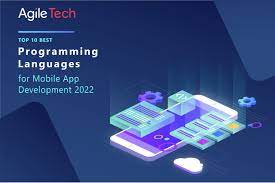Here are some commonly used mobile programming languages along with their advantages and disadvantages:
- Java:
Advantages:
- Widely used language for Android app development, with a large community and extensive documentation.
- Object-oriented programming capabilities.
- Mature ecosystem with numerous libraries and frameworks available.
Disadvantages:
- Requires a significant amount of boilerplate code.
- Can be memory-intensive and have slower performance compared to some other languages.
- Limited support for concurrent programming.
- Swift:
Advantages:
- Developed by Apple specifically for iOS app development, offering seamless integration with Apple’s ecosystem.
- Modern syntax and features, making it easier to write clean and expressive code.
- Strong language-level support for safety and security.
Disadvantages:
- Limited to Apple’s platforms (iOS, macOS, watchOS, tvOS), which can limit the reach of apps.
- Smaller community compared to other languages like Java or JavaScript.
- Frequent updates and changes to the language can introduce challenges for developers.
- Kotlin:
Advantages:
- Officially supported by Google for Android app development, providing excellent compatibility with existing Java codebases.
- Concise syntax and reduced boilerplate code compared to Java.
- Improved null safety and modern features that enhance developer productivity.
Disadvantages:
- Smaller community compared to Java.
- Limited support for writing cross-platform code, primarily focused on Android development.
- Learning curve for developers transitioning from Java to Kotlin.
- Objective-C:
Advantages:
- Used primarily for iOS and macOS development, has a long history and a mature ecosystem of libraries and tools.
- Direct access to Apple’s API and frameworks.
- Can be integrated with C and C++ code.
Disadvantages:
- Uses a different syntax and programming style compared to modern languages like Swift or Kotlin.
- More verbose than newer languages.
- Steeper learning curve than some other options.
- React Native (JavaScript):
Advantages:
- Enables building mobile apps for multiple platforms (iOS and Android) using a single codebase.
- Utilizes JavaScript, a widely-used language with a large community and extensive libraries.
- Provides a native-like user experience and performance.
Disadvantages:
- May not offer the same level of performance or control as native languages.
- Relies on third-party libraries and may have limitations due to platform-specific differences.
- Debugging can be challenging due to the complexity of JavaScript.
These are just a few examples of mobile programming languages, and each has its own strengths and weaknesses. The choice of language often depends on factors such as the target platforms, developer familiarity, performance requirements, and the available resources and support.
SHARE
